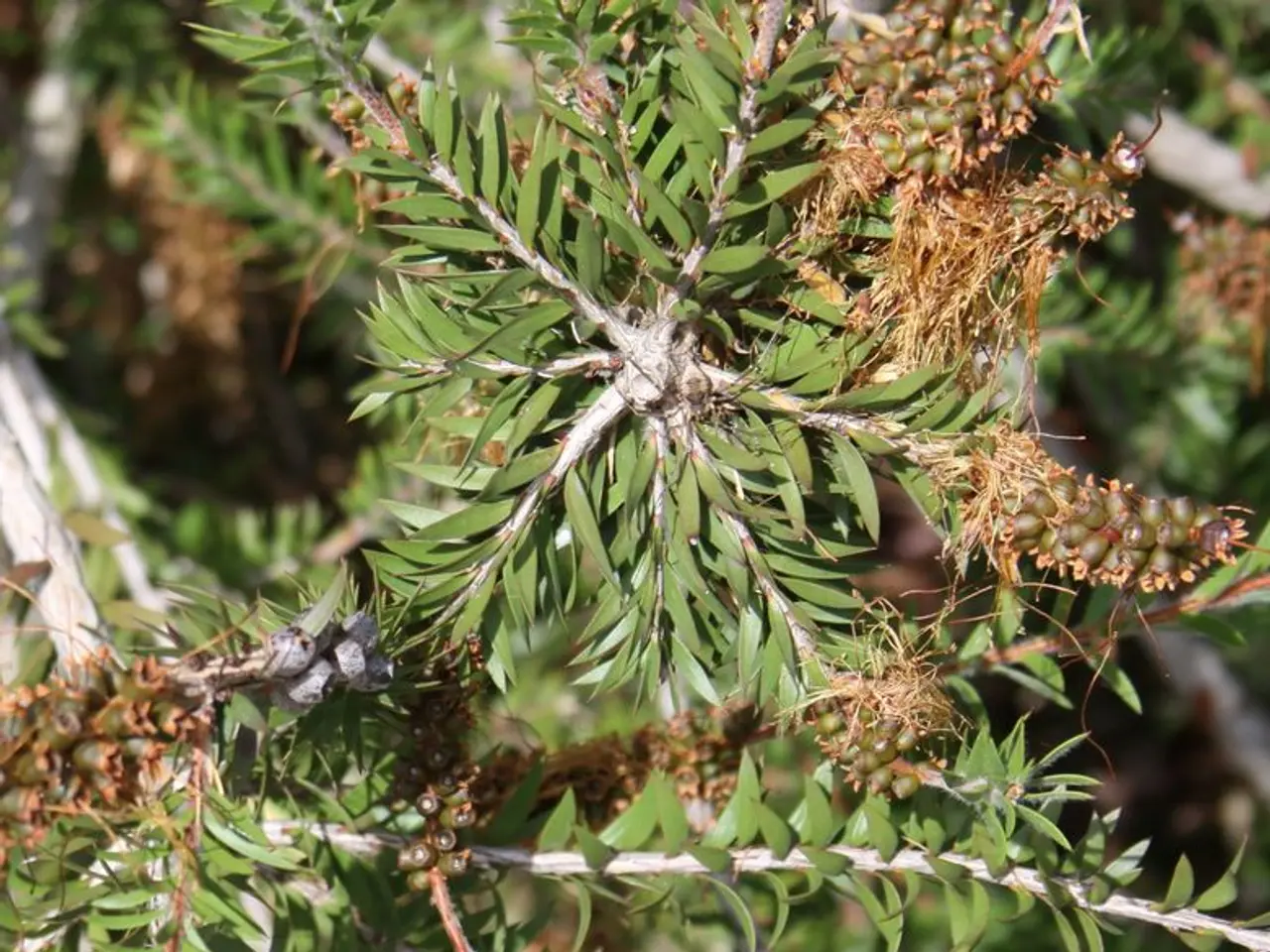Harvested Fruit Trees to Trim for Healthy Home Orchards and Future Produce: Discover the 5 Trees That Need Post-Harvest Pruning
In the world of horticulture, pruning fruit trees is a crucial aspect of their care. By limiting growth, opening up the tree center to sunshine, and encouraging a heavy fruit load, pruning plays a significant role in maintaining a thriving home orchard.
Citrus Trees
Citrus trees, evergreen and thriving in warm climates, are a popular choice for many gardeners. From lemons and limes to grapefruit, oranges, and tangerines, these trees offer a variety of fruits. Pruning citrus trees is essential, but the specific timing may depend on the variety. Generally, pruning can be done right after harvest, with the season spanning late fall through early spring. However, it's important to note that each citrus tree variety may have unique pruning requirements.
Avocado Trees
Avocado trees, another evergreen fruit tree, grow well in warm-winter areas like Florida, Southern California, and Hawaii. These trees are top candidates for post-harvest pruning, with the fruit harvest period ranging from June to September. Pruning avocado trees right after harvest allows the tree to produce new growth before the flowering season. Mature avocado trees should be kept at an accessible height - no taller than 15 feet (5m) - to facilitate easy harvesting.
Guava Trees
Guavas, another evergreen fruit tree, grow well in warm-winter areas. They produce crops twice a year, one in spring and one in fall. Pruning guavas is best done after either the spring harvest or the fall harvest to shape the tree.
Pruning Techniques
Bypass blades like those of the Felco F2 Bypass Shears provide sharp precision cuts that heal quickly, making them ideal for young and thin fruit branches. For thicker branches, a hand saw like the Silky Zubat Arborist Hand Saw is more suitable.
Timing is Key
Pruning at the wrong time can lead to the loss of the next year's fruit crop or the death of the tree. It's essential to research the specific pruning requirements for each fruit tree species. Some species can be pruned back ahead of the dormant season, just after the harvests, while others may require specific timing during the growing season.
Health and Safety
Tree wounds heal more effectively in late summer when the weather is still dry, reducing the risk of diseases spreading. To further alleviate this risk, ensure your pruning tools are sterile and cleaned properly after each use. Applications of isopropyl alcohol in concentrations of 70%, such as Dealmed Isopropyl Rubbing Alcohol, can also reduce the risks of fungal diseases.
Training and Pruning
When a newly planted tree is being shaped, the process is called training. Once a tree shape is established, trimming is termed pruning. Late summer pruning puts a break on growth, making the fruit tree stay shorter for longer. Trees pruned during the dormant season heal rapidly and can use their energy to create new growth as spring rolls in.
Choosing the Right Trees
If you're interested in growing a citrus tree, consider buying Citrus 'Meyer Lemon' from Fast Growing Trees for a cold hardy and productive tree. For an avocado that's cold tolerant, buy Avocado 'Choquette' from Fast Growing Trees for high yielding fruits.
Other Considerations
It's important to note that not all fruit trees should be pruned after harvest. Only a small selection of fruit trees, including evergreen fruit trees like avocado and citrus, and specific stone fruit trees, should be pruned after harvest. Additionally, some fruit trees, like sweet cherries, are susceptible to bacterial canker, a disease that spreads best during wet, cool weather. Pruning in the summer is the best way to protect the tree.
Lastly, five fruit trees commonly dried after harvest are apple, pear, plum, peach, and mulberry trees. Kumquats, despite their small size and tart fruit, perfect for jellies and jams, are officially citrus but are listed separately due to their unique characteristics. Kumquat harvesting dates will vary depending on region, and can be November in Florida, and later in California.
In conclusion, pruning fruit trees is an essential part of their care, and understanding the unique requirements of each tree species is crucial for a bountiful fruit harvest.
Read also:
- Wawa avian tests positive for West Nile disease
- Individuals suffering from ailments such as arthritis or asthma could potentially secure £30,000 in financial aid for home renovations at no cost to them.
- The market for Kraft Lignin is projected to increase at a rate of 7.2% each year until 2034.
- Revising hair care practices with cynorrhodon extracts for addressing hair fragility





